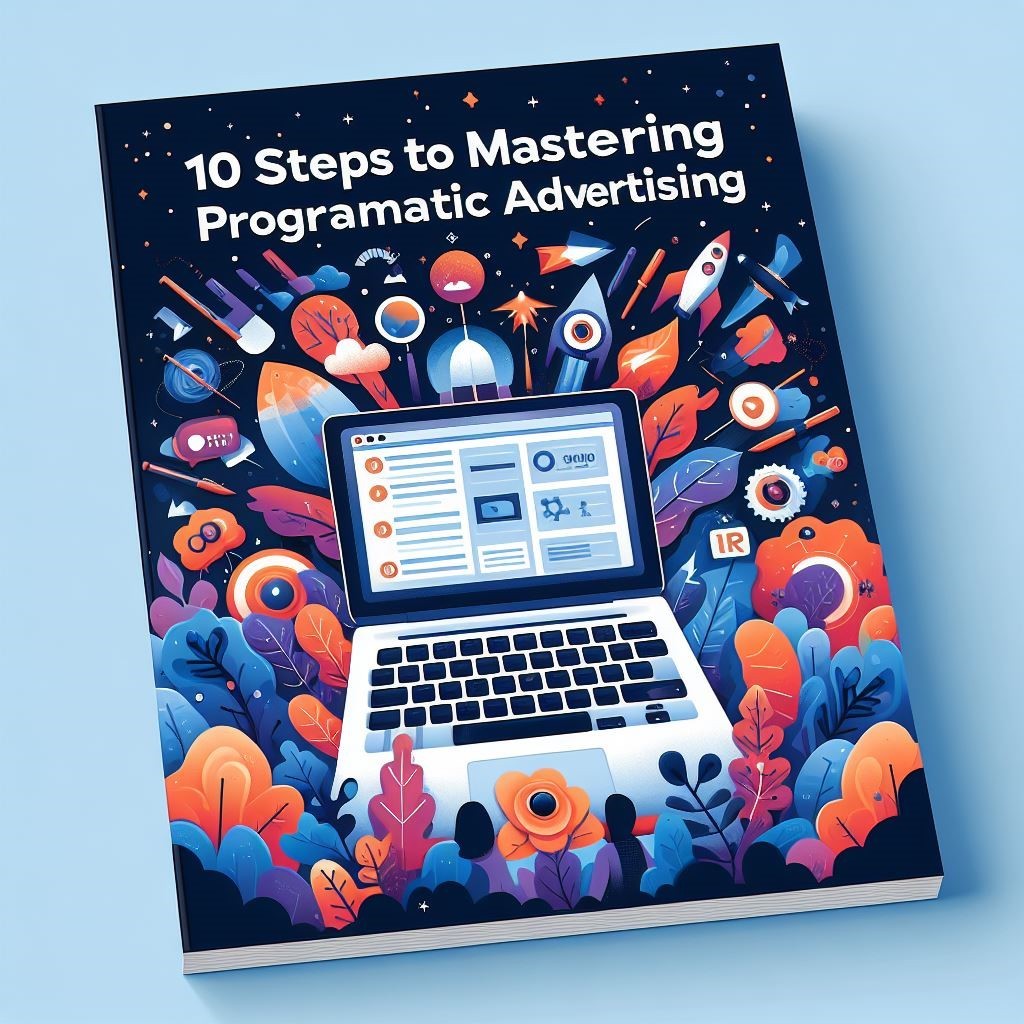10 Steps To Mastering Programmatic Advertising: A Comprehensive Guide for Online Marketing Professionals
Programmatic advertising has revolutionized the way digital advertising is conducted, providing marketers with advanced tools to automate the buying and placement of ads.
In this comprehensive guide, we will walk through the step-by-step process of building a programmatic advertising campaign from start to finish. Whether you're a seasoned marketer or a newcomer to programmatic advertising, understanding these steps will empower you to create effective and efficient campaigns that drive results.
Step 1: Define Your Campaign Objectives and KPIs
Before diving into the technical aspects of programmatic advertising, clearly define your campaign objectives and key performance indicators (KPIs). Whether you aim to increase brand awareness, drive website traffic, or boost conversions, having well-defined goals will shape the rest of your campaign strategy.
Step 2: Identify Your Target Audience
Programmatic advertising allows for precise audience targeting. Utilize data to identify your target audience based on demographics, interests, behaviors, and other relevant factors. Understand your audience's preferences to tailor your creative assets and messaging for maximum impact.
Step 3: Choose the Right Programmatic Platform
Selecting the appropriate programmatic platform is crucial for campaign success. Consider factors such as available inventory, targeting options, transparency, and reporting capabilities. Popular platforms include Google Ad Manager, The Trade Desk, and AdRoll. Choose a platform that aligns with your campaign goals and audience targeting needs.
Step 4: Set Your Budget and Bidding Strategy
Determine your budget and choose a bidding strategy that aligns with your campaign objectives. Options include cost per mille (CPM), cost per click (CPC), and cost per acquisition (CPA). Ensure that your budget is allocated strategically across different segments of your target audience to maximize reach and impact.
Step 5: Develop Compelling Creative Assets
Create eye-catching and relevant creative assets for your campaign. Tailor your ad creatives to resonate with your target audience. Consider different ad formats, including display ads, native ads, and video ads. Ensure that your creative assets comply with the specifications of the programmatic platform you've chosen.
Step 6: Implement Conversion Tracking and Analytics
Integrate conversion tracking tools and analytics to measure the performance of your programmatic campaign. Track key metrics such as impressions, clicks, conversion rates, and return on investment (ROI). Utilize these insights to optimize your campaign in real-time and make data-driven decisions.
Step 7: Launch Your Programmatic Campaign
Once all elements are in place, launch your programmatic advertising campaign. Monitor its performance closely during the initial phase to identify any issues or opportunities for optimization. Programmatic platforms often offer real-time reporting, allowing you to make adjustments on the fly.
Step 8: Monitor and Optimize in Real Time
Continuous monitoring is essential for a successful programmatic campaign. Utilize the real-time data provided by your chosen platform to make adjustments based on performance. Optimize targeting parameters, adjust bidding strategies, and refine creative assets to improve overall campaign effectiveness.
Step 9: A/B Testing for Continuous Improvement
Implement A/B testing to refine and enhance your programmatic advertising strategy. Test different creatives, ad formats, messaging, and targeting options to identify the most effective combinations. Regular testing ensures that your campaign stays relevant and resonates with your evolving audience.
Step 10: Analyze Results and Report on Campaign Performance
At the conclusion of your programmatic campaign, conduct a comprehensive analysis of the results. Compare actual performance against your defined KPIs. Prepare a detailed report outlining key insights, successful strategies, and areas for improvement. Use this information to inform future programmatic campaigns and enhance overall marketing strategies.
Building a successfully sustainable programmatic advertising campaign involves a strategic blend of planning, execution, and continuous optimization.
By defining clear objectives, identifying your target audience, choosing the right platform, setting budgets and bidding strategies, creating compelling creative assets, implementing tracking and analytics, launching the campaign, monitoring and optimizing in real time, conducting A/B testing, and analyzing results, online marketing professionals can master the art of programmatic advertising. Embrace the power of automation and data-driven decision-making to create campaigns that not only meet but exceed your marketing goals in the dynamic and competitive digital landscape.

